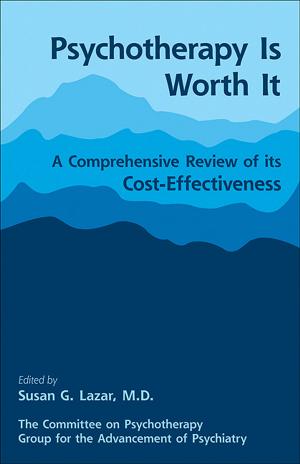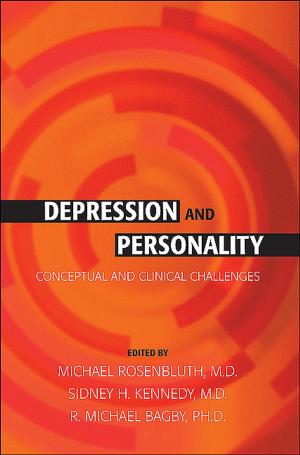Clinical Manual of Prevention in Mental Health
Nonfiction, Health & Well Being, Medical, Specialties, Psychiatry| Author: | ISBN: | 9781585629237 | |
| Publisher: | American Psychiatric Publishing | Publication: | October 13, 2009 |
| Imprint: | American Psychiatric Association Publishing | Language: | English |
| Author: | |
| ISBN: | 9781585629237 |
| Publisher: | American Psychiatric Publishing |
| Publication: | October 13, 2009 |
| Imprint: | American Psychiatric Association Publishing |
| Language: | English |
According to David Satcher, M.D., Ph.D., the 16th U.S. Surgeon General, we know a great deal more about treating mental illnesses than about preventing them and promoting mental health. In his foreword to Clinical Manual of Prevention in Mental Health, Dr. Satcher applauds this guide as timely and vital, as it provides new and emerging research on the importance of prevention in mental health.
Clinical Manual of Prevention in Mental Health was conceived through discussions within the Prevention Committee of the Group for the Advancement of Psychiatry (GAP), and features contributions from 30 highly regarded clinicians and researchers who are experienced in the treatment and prevention of specific types of mental illnesses.
Clinical Manual of Prevention in Mental Health will help you move toward widespread adoption of mental illness prevention in your own practice setting. This important new reference provides practical suggestions to help you work toward preventing, or implementing preventive measures in the treatment of Mood disorders Anxiety disorders Schizophrenia Substance use disorders Suicidality Family violence Conduct disorder and other adolescent disorders Late-life depression, dementia, and mild cognitive impairment Physical illnesses in psychiatric settings Cigarette smoking
Compared with other areas of medicine, such as the prevention of infectious disease, our understanding of the prevention of mental illnesses remains in a relatively nascent state, especially in terms of how prevention can be incorporated into routine clinical practice. The authors of the various chapters have endeavored to balance reviewing the available research knowledge with providing guidance for practicing clinicians on how such knowledge can be incorporated into everyday practice.
Clinical Manual of Prevention in Mental Health urges clinicians everywhere to inquire about risk factors and protective factors in patients' lives in addition to focusing on the presenting problem. It is the authors' intent to provide mental health professionals with the knowledge and practical applications necessary to be prevention-minded in all of their interactions with patients, families, and the community.
According to David Satcher, M.D., Ph.D., the 16th U.S. Surgeon General, we know a great deal more about treating mental illnesses than about preventing them and promoting mental health. In his foreword to Clinical Manual of Prevention in Mental Health, Dr. Satcher applauds this guide as timely and vital, as it provides new and emerging research on the importance of prevention in mental health.
Clinical Manual of Prevention in Mental Health was conceived through discussions within the Prevention Committee of the Group for the Advancement of Psychiatry (GAP), and features contributions from 30 highly regarded clinicians and researchers who are experienced in the treatment and prevention of specific types of mental illnesses.
Clinical Manual of Prevention in Mental Health will help you move toward widespread adoption of mental illness prevention in your own practice setting. This important new reference provides practical suggestions to help you work toward preventing, or implementing preventive measures in the treatment of Mood disorders Anxiety disorders Schizophrenia Substance use disorders Suicidality Family violence Conduct disorder and other adolescent disorders Late-life depression, dementia, and mild cognitive impairment Physical illnesses in psychiatric settings Cigarette smoking
Compared with other areas of medicine, such as the prevention of infectious disease, our understanding of the prevention of mental illnesses remains in a relatively nascent state, especially in terms of how prevention can be incorporated into routine clinical practice. The authors of the various chapters have endeavored to balance reviewing the available research knowledge with providing guidance for practicing clinicians on how such knowledge can be incorporated into everyday practice.
Clinical Manual of Prevention in Mental Health urges clinicians everywhere to inquire about risk factors and protective factors in patients' lives in addition to focusing on the presenting problem. It is the authors' intent to provide mental health professionals with the knowledge and practical applications necessary to be prevention-minded in all of their interactions with patients, families, and the community.















